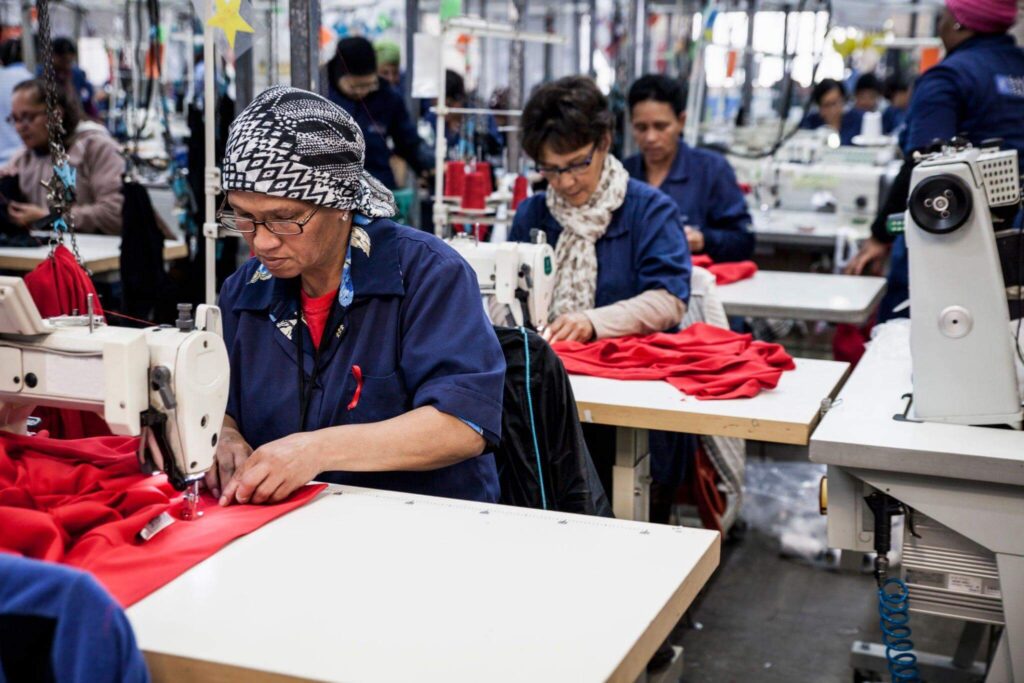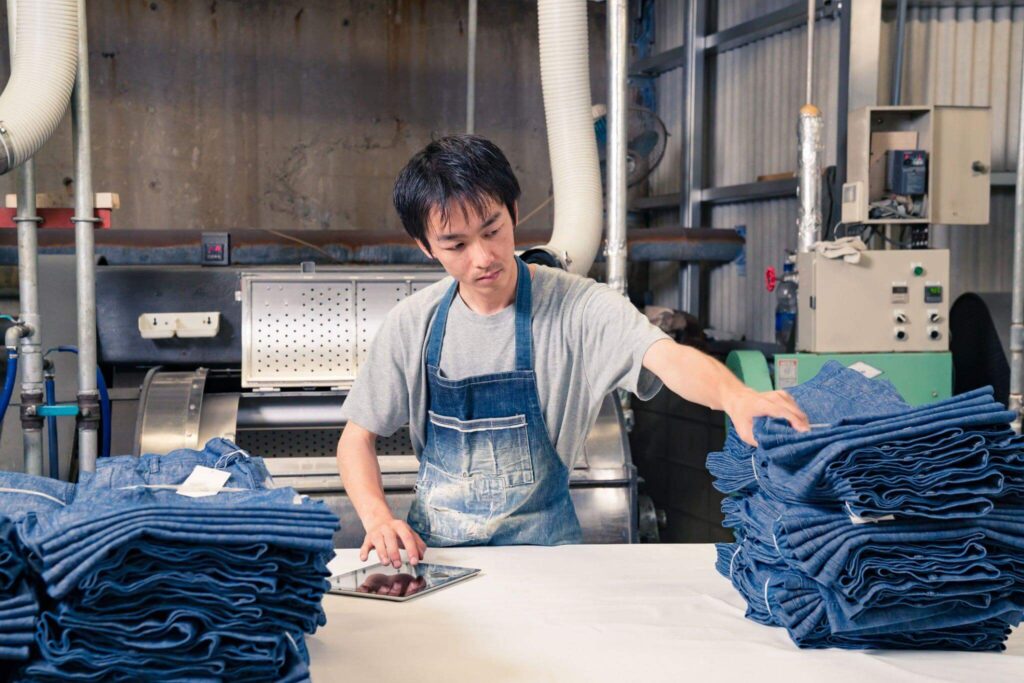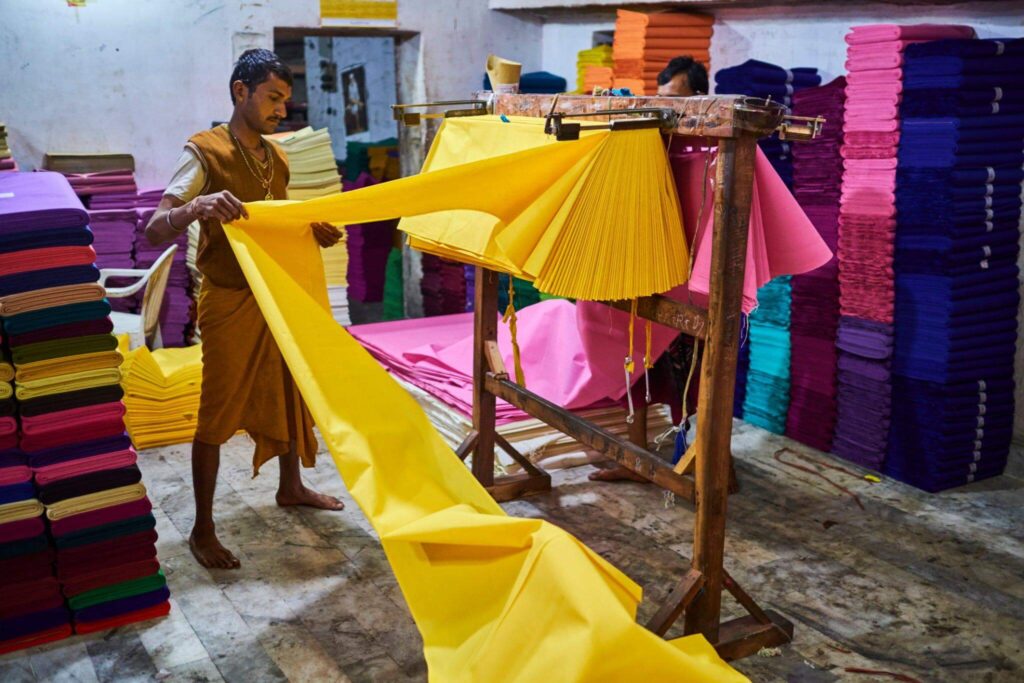Have you ever dreamed of starting a fashion clothing line? Whether you’re interested in styling, high-street fashion, or stylish sleepwear, bringing your creative visions to life is fun. Let’s be real – fashion isn’t just about fashion and beauty. There’s some serious business involved, and that starts with the basic understanding of funds and finances to start your fashion brand.
Today, we explain how much it costs to start a clothing line. We’ll break it down so you can start your journey better prepared and more familiar with the financial journey ahead. So grab your sketchbook, put on your favorite outfit, and start!
Here Is What You Need To Know Before Launching a Clothing Line!

Although beginning a clothing brand is not difficult, certain critical factors must be considered. This will assist you in keeping track of important details as you calculate the average costs for the clothing business.
Niching
Globally, people are eager to upgrade their wardrobes and fashion sense, but not everyone has the same needs. An office worker’s clothing requirements differ from those of a preschooler. Additionally, you might be unable to cater to every market segment when you first start.
As a result, it’s best to choose a market whose needs you can effectively satisfy, taking into consideration the cost of clothing. Your target audience, marketing initiatives, price points, product packaging, etc. will all be informed. Niching also establishes you as a thought leader in your field, which increases your income and business opportunities.
Production
Production is a crucial factor to take into account, and it involves more than just the clothing manufacturing cost estimation. How do you plan to acquire the clothing you want to sell? Do you intend to hire a manufacturer to make clothes for you, or will you manufacture yourself? Before starting your company, you must decide how to source the goods for your clothing line.
Customers shouldn’t be made to wait or receive poor products, either. Additionally, keep in mind that your production expenses determine your price points. The cheapest items aren’t always high quality, and you don’t want your prices to turn off potential buyers. You must settle on a midway ground to balance quality and affordability in your product offerings.

Funding
Raising money to launch your clothing line can be straightforward or challenging, depending on how you go about it, and it’s closely tied to understanding how much money you need to start a clothing brand effectively. You can invest your money or ask relatives and friends for financial assistance. You can also receive loans, which is only wise if your firm is set up well enough to handle loan payback.
Angel and venture capitalist investors can also be helpful, but you must be eligible. However, you don’t need money to start your clothes brand. You can work out a deal with a manufacturer, find a market for the clothing on social media, and start selling it. You pay the manufacturer from the sales and expand your company with your profits. It’s a budget-friendly way to launch your clothing line, and it can be a great option for those with limited initial capital.
What Is The Cost To Start A Clothing Line For?

Planning and Research
Before starting your fashion line, it is important to do thorough market research, which is essential when considering startup expenses for a clothing store. This involves understanding who your potential customers are. What is it that they want? What fashion needs are currently unmet?
As mentioned in the section above, finding your niche is important. It provides insight into your target audience, marketing strategies, pricing, packaging, and more. Niching also establishes your authority in the industry and can increase your business revenue and growth.
A clothing line business plan is your road map. It outlines your brand’s vision, strategies, and how you intend to succeed. Think of it as a fashion GPS. Plus, a clear business model is like the blueprint for your clothing line. It shows what unique products you sell and how you plan to make money. Understanding these aspects is crucial when considering the expenses associated with starting a clothing store.
Pre-Launch Expenses
Starting a fashion line requires an initial expenditure outlay. Legal requirements such as registering your business and your trademark are important to protect your clothing line identity and can contribute to the cost of clothing. You will also spend on market research, product development, and installation.
Do not underestimate the importance of establishing a digital presence through websites and social media. These platforms are essential to inform the world about your brand’s existence and can be a valuable part of your cost clothing breakdown. Further explanations of these platforms are provided in the marketing section.
Design and Production Costs
In this phase, your creative vision meets reality. Design and development costs can vary greatly depending on the complexity of your fashion design. Are you aiming for avant-garde pieces or comfortable everyday wear? The choices you make here will affect your spending.
Sourcing materials and fabrics is another important cost. High-quality fabrics are generally more expensive but crucial to keeping your dress looking good and long-lasting. Investing in prototypes and clothing sample makers is a must, as it acts as a fashion rehearsal for your fashion show, ensuring the quality of your products.

Manufacturing Costs
Production costs vary significantly depending on factors such as location and production volume. It’s a central choice when deciding between domestic and overseas manufacturing, and it can significantly affect your costs. When considering how much does it cost to manufacture clothes, it’s crucial to effectively communicate with manufacturers to optimize costs and achieve optimal production schedules. This understanding is essential for planning your clothing line’s budget and production strategy.
For those wondering how to find clothing manufacturers, it’s essential to consider factors like the manufacturer’s location, production capabilities, and willingness to work with businesses of your scale. Conduct thorough research and engage in open communication to ensure you find the right manufacturing partner that aligns with your clothing line’s needs and budget constraints.
Marketing and Promotion Expenses
Fashion is more than just clothes; it’s storytelling. Building your brand through marketing and promotions is important. Strategies like social media, influencer collaborations, and fashion shows are effective but have associated costs. This is to take into account especially when considering the cost of starting a clothing line. It’s essential to understand the expenses related to marketing and promotions, as they are a significant part of the overall cost of getting your fashion brand off the ground.
Website
You must launch a website to successfully sell your products online and build your brand awareness. You can target a sizable number of online sales by offering online payment alternatives and selling clothing from your website.
You can create a website with all the necessary information, from product photographs to prices and reviews, to assist clients in making purchasing decisions. For a better user experience, you might employ a website developer or an agency to build a beautiful website.

Social Media Marketing
Being active on social media and running advertising is an efficient marketing approach to reach your target audience and grow your brand. You can start small by improving the engagement and reach of your social media profiles. You may quickly increase your online presence and create a sizable online community by promoting your social media accounts and postings.
Search Engine Marketing (SEM)
As more people shop online, ranking highly on search engine results pages is effective to drive more visitors. When a person searches for a particular keyword, search engine marketing is paid advertising on Google or other search engines.
Running Google Ads is a marketing expense that can boost your product sales and turn your start-up into a profitable venture. Your budget allows you to bid for a specific relevant term to direct potential customers to your company website from the Google page.
The best strategy to promote your company online through a skilled marketing team is to hire a digital marketing firm. You can obtain full online marketing security from an agency, including website development, social media marketing, online ad generation, content creation, etc. Hire a company to handle your entire web marketing strategy. You may also be eligible for additional savings and concessions.
Distribution and Sales Costs
Costs to start a clothing line are involved, whether you’re opening a conventional or online shop. Inventory control, transportation, and packaging are crucial to consider and budget. You might also look into distribution and sales partnerships to lower overhead costs.
Operational Costs
After the initial thrill dies down, continuing operating costs become important, especially when considering how much to start a clothing line. Rent, utilities, and employee pay are included in this. Maintaining thorough financial records and employing sound financial management procedures is essential for the long-term survival of your clothing line. Let’s examine a few methods for effectively controlling operating expenses in your clothing line business.
Negotiate Favorable Lease Terms
If you are acquiring a retail or office space, negotiate a lease that suits your business. Consider a shorter lease period or include rent flexibility options to grow your business.
Energy Efficiency
Implement energy-saving measures to reduce utility costs. Simple steps like energy-efficient lighting and insulating your space can save you big bucks in the long run.
Staffing Efficiency
Manage your employees well to reduce labor costs. Provide training for employees so they can multitask, reducing the need to hire others. Use flexible scheduling to match staffing levels with peak operating hours.
Inventory Control
Implement an effective inventory management system to reduce storage costs. Avoid overstuffing with obsolete items, and check your inventory regularly to spot slow-moving items.

Technology Integration
Leverage technology to streamline operations and reduce manual labor. Implement point-of-sale systems, inventory management software, and automated accounting tools to increase productivity.
Bulk Purchasing
Consider buying in bulk to save on costs when ordering supplies or materials. Buying in bulk can often lead to discounts or cost reductions per unit.
Outsourcing
Consider outsourcing certain tasks, such as accounting or customer support, instead of hiring full-time employees. This can be a cost-effective solution, especially for small businesses.
Flexible Suppliers
Establish good relationships with suppliers and negotiate favorable payment terms. Flexibility in your payment schedule can help save money and reduce finance costs.
Contingency Budget
Developing a contingency budget to protect against unexpected financial challenges. You should set aside 10-20% of your total budget as a contingency fund. This financial solution can help your fashion line cope with unexpected expenses and maintain strong business.
The Cost of Starting a Clothing Line (In Numbers)

The cost to launch a clothing brand is not predetermined. Your manufacture, launch, and delivery costs will affect the price. Additionally, the size of your fashion company matters. A small clothing line’s start-up costs cannot be compared to those of a large one.
In addition, various factors affect how much it costs to launch a clothing business. Location is one of them. Some locations naturally have lower production costs. For example, production costs will be lower in Africa than in the United States. The price of the fabric is another important consideration. Your costs will decrease as you negotiate better bargains. However, you can make plans using the numbers below.
Small-Sized Clothing Line
A small apparel line requires between $1000 and $2000, which is crucial information when considering how much is it to start a clothing brand. This sum will cover your small-scale production and launch expenses. Fabrics, accessories, and sewing machines are required if you plan to design and sew everything yourself.
You would have to pay for staffing if the work was being outsourced. With this budget, you will mostly rely on free and organic promotion methods, and you may have to ask your consumers to pay for delivery before sending them the products. Understanding these initial budget requirements is vital for anyone looking to start a small clothing brand.
Medium-Sized Clothing Line
You’ll have more items in your collection if you start your fashion company on a medium scale. Additionally, you can use more paid marketing channels, including social media advertising and influencer marketing. You’d need to hire more workers to run your clothesline because you can’t handle production and shipping by yourself. A medium-sized clothing brand needs between $2000 and $5000 to start.
Large-Sized Clothing Line
Costs for a large-size clothing line range from $25000 to $50000. In this case, you invest much in production, launch, and marketing. You must exercise utmost caution to avoid mismanaging your finances. Your work plan should be prepared and sensible enough to use your cash, regardless of the size of your organization. You might also need to hire a seasoned manager to monitor your team’s efficiency and resources.
The profits increase with capital size. While having more money gives your company greater leverage, what matters is how creative you can be with what you already have. You don’t have to start big to attract a sizable, paying audience. Digital media has also given smaller firms a voice and reduced marketing expenditures.
Summarizing Your Budgeting Journey So Far!
Launching a clothing line is an exciting journey that combines your passion for fashion with industry demands. While the exact costs vary greatly based on several factors, careful planning and budgeting are your key allies when deciding how much does it cost to start a clothing brand. Niching, production options, financing strategies, and a well-thought-out business plan can help you navigate the fashion business environment.
So, whether you want to start a small, medium, or large clothing business, remember that resourcefulness and effective financial management are essential. Your journey into fashion entrepreneurship may not have a fixed price tag. Still, it has endless potential for creativity and success. Understanding these principles is vital for those considering entering the fashion industry.
Ready to make your fashion dreams a reality by starting a clothing line? Take the first step with a well-considered budget and financial strategy. Start your clothing line today and let your creativity shine!







